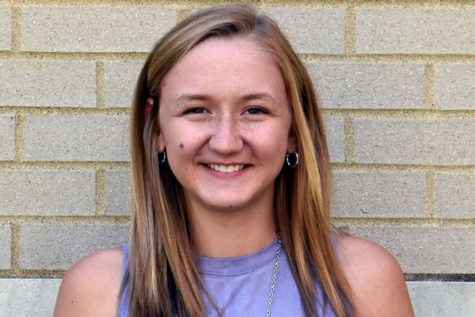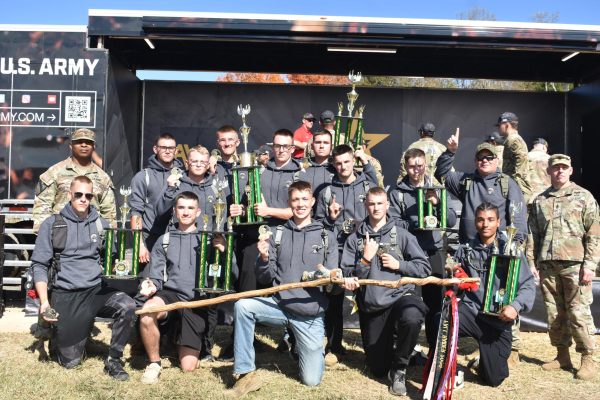School Leaders Speak Out On How to Improve School Safety
Eight intentional school shootings have occurred since Jan 1, one of which took place in the state of Kentucky. These tragedies have sparked the question of what further measures school districts should take to ensure the safety of this nation’s children.
Smoke Signals reached out to several school and district administrators to find out their stances on the issue and what solutions they believe would be effective.
Answers from those who responded ranged anywhere from revisiting safety protocols already in place, to creating stronger bonds with students and making sure they feel wanted and accepted.
Safety Precautions
Bolen suggested that reviewing the school’s emergency procedures is the first step to be taken in light of the recent school tragedies.
“Increased attention to school security measures resurfaces after every school tragedy,” says Bolen. “We must be diligent in making sure all exterior exits remain locked throughout the course of the day. Making sure all visitors are scrutinized is a necessity.”
Bolen also believes that safety protocols do not need to be public knowledge. “Revising and/or developing new security measures/safeguards is an area being examined for school and district personnel,” he says. “Obviously all protocols can’t be shared with everyone.”
Bolen said safety meetings are underway at the district level to review protocol, adding that “additional safeguards will be implemented over the next few weeks” at GRC.
Assistant principal Daren Snell brought up multiple precautions that are already in place at GRC, such as visitors being screened at the guard shack and exterior doors remaining locked throughout the day. “Students have done an excellent job of making sure the rear doors remain locked when they leave school,” says Snell.
He also mentioned a few precautions he thinks could be taken to further ensure the safety of students.
“Bulletproof glass on exterior doors would be expensive but I can’t think of any other way to keep someone from shooting their way into the school,” says Snell. “In my opinion, metal detectors would force us to implement a no backpack policy so that students could enter in a timely fashion. We cannot search every student coming into the building in a timely fashion without using every staff member. We would also need to have someone available to screen every person that arrives after the school day has begun.”
Board of Education chair Scott Hisle was on the same page as Snell regarding metal detectors. “Fixed metal
detectors are not the answer,” Hisle says, adding they have “too many opportunities to circumvent and may give a false sense of security and detract from better means of monitoring.”
Hisle also gave several safety measures he believes could be taken, including reviewing check-in procedures for visitors to include scanning their driver’s license and expanding the ability to view security cameras through alternate means, such as cell phones.
Hisle and fellow board member Gordon Parido agreed that finding funds for any needed safety precautions will not be an issue.
“Given our current financial status I do not see any obstacles that would keep us from approving a well-
designed plan,” Parido said.
Hisle added, “We could certainly tap our reserve (contingency) funds. In addition, for potential recurring expenses, after first exploring other avenues, I would be willing to support a moderate increase in our tax rate to support a critical on-going safety need.”
Building Relationships
In addition to tangible changes that can be made, all respondents were in agreement that intangible changes must occur as well.
Robert D. Campbell Junior High head principal Dustin Howard said, “I believe that our best approach is to
ensure that every student has a positive relationship with an adult in our schools. We need to be very intentional with educating the whole child and providing the much needed mental health support for our students. I truly believe that until the school culture supports ALL students, we will continue to have issues with student violence in schools.”
Snell also stressed that relationships with students are of paramount importance.
“The best way to protect our students and staff is to prevent the incident in the first place,” says Snell.
“Students will generally talk to someone if they think the other person cares enough to listen. We have to take time to listen.”
Hisle mentioned working to increase involvement with parents/guardians, optimizing handling of bullying and
harassment, and increased focus on bus conduct as options for reducing violence.
Parido said districts need to plan long-term and not be reactionary. “We must create an environment of
‘belonging,’ – making sure every student has an adult connection, and identification of at-risk students is vital in creating the community we desire,” he said.
One solution that has been brought to the media’s attention nationwide recently is arming teachers so that in an active shooter situation, they would be able to handle the situation quickly without having to wait on law
enforcement.
“I am not sure I am in favor of arming teachers,” says Snell. “I am definitely not in favor of letting anyone with a concealed carry permit bring a firearm into a school building.”
Bolen said he supports the ongoing discussions throughout Kentucky school districts to arm designated administrators or school safety officers who have been thoroughly screened and trained.
Those who responded to Smoke Signals seemed to be focused on getting more involved in the lives of the students, rather than cracking down harder on security.
“Hiring good teachers who recognize student needs, in the long run, are more valuable than an officer in the building,” Parido said. “But because we, as a nation, haven’t recognized the value of the former, we are left with providing the latter. Maybe, that change starts today.”

Emily Rice is a Senior and second-year Smoke Signals member. She watches How I Met Your Mother on repeat and says her favorite color is blue, without a doubt.






